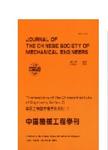版权所有:内蒙古大学图书馆 技术提供:维普资讯• 智图
内蒙古自治区呼和浩特市赛罕区大学西街235号 邮编: 010021

作者机构:State Key Laboratory of Robotics and System Harbin Institute of Technology Harbin 150080 China
出 版 物:《Journal of the Chinese Society of Mechanical Engineers, Transactions of the Chinese Institute of Engineers, Series C/Chung-Kuo Chi Hsueh Kung Ch'eng Hsuebo Pao》 (J Chin Soc Mech Eng Trans Chin Inst Eng Ser C)
年 卷 期:2013年第34卷第6期
页 面:561-569页
核心收录:
摘 要:A lunar roving vehicle (LRV) is the key for manned lunar explorations and for supporting a lunar base. It is therefore necessary for the maneuverability and adaptability to the environment of its wheels to be known during the design phase. Toward this end, it is essential to build a test bench for LRV wheels. A torsion spring loading mechanism with a parallelogram linkage instead of a counterweight enables continuous vertical loading of the testing wheel and reduces the inertia and start-up time of the testing wheel. However, the vertical load during transition from the initial stationary state to the stable movement state contains an error because of slip sinkage. The variation of sinkage leads to variations in the vertical displacement of the testing wheel, causing changes in the torque of the torsion spring and in turn causing vertical loading errors in the wheel. In this study, the vertical loading error of a testing wheel loaded by a torsion spring was analyzed, and an error compensation algorithm was deduced theoretically. Finally, highly accurate vertical loading of the wheel test bench for an LRV was realized. This should lay the foundation for future wheel experiments of LRVs.